Estimated reading time: 7 minutes
Just about every big box store or gas station minimart has a beef jerky display at eye height right beside the checkout. Of course, it’s delicious, a good source of protein, an easy survival food, and a lightweight, packable treat. It’s also expensive! But you can make beef jerky yourself if you want to save money or just be a little more self-sufficient.
In this article, we’ll give you some good recipes for beef jerky and teach you how to make it yourself with a dehydrator. We’ll also talk about storage options. But first, let’s talk about where beef jerky came from.
Want to save this post for later? Click Here to Pin It On Pinterest!
The Origins of Beef Jerky
It seems that beef jerky originated in the mountains of what is now Peru around the middle 1500s. A South American tribe of indigenous people, known as the Quecha, made the earliest forms of beef jerky that we know of. It was called Ch’arki, meaning ‘to burn meat.’
They would dry their meat in the hot sun and then allow it to freeze in the cold air overnight. It was made with the bones still in it, and the meat probably came from llamas or alpacas. When the Spanish conquistadors discovered this early form of beef jerky, they adapted it to their palates and changed the name to charqui. Over time, it evolved into the beef jerky that we love to munch on today.
Beef Jerky as Survival Food
Beef jerky makes an excellent survival food. It’s lightweight, portable, nutrient-dense, and can be stored for long periods of time. It’s also a great source of protein. Commercially produced beef jerky can last for several years. Homemade beef jerky is great for emergencies, but it doesn’t have the same shelf-life as commercially prepared jerky.
Homemade beef jerky will last about a week in your pantry. In the fridge, it can last for two weeks. If you store it in a vacuum-sealed, air-tight container, it could last for a month or two.
What Kind of Meat Do You Use for Beef Jerky?
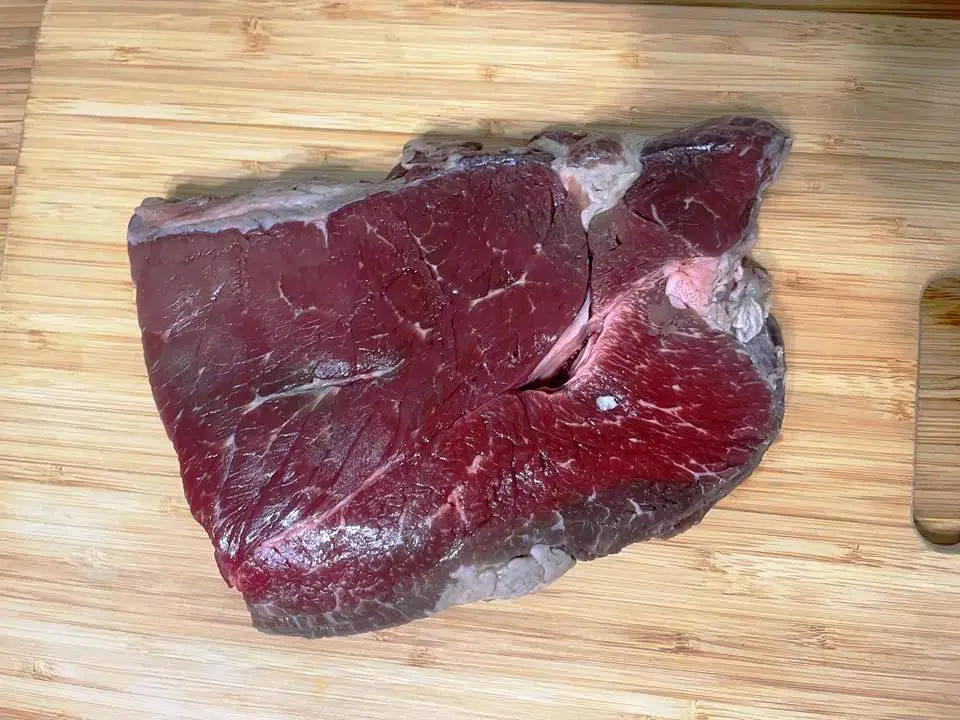
Most people use beef to make their beef jerky. It’s best to start with a cut of meat such as eye of round, bottom round, or top round. The less fat your cut of meat has, the longer your beef jerky will be able to be stored.
- Eye of round
- Bottom round
- Top round
- Sirloin tip
- Ground beef
- Flank steak
- Deer meat
I used filet minion because it was on sale, and I could get a nice cut for a good price.
Slice your Meat

You’ll need to slice your meat in strips about ¼ of an inch thick. It needs to be thick enough to hold together as it dehydrates but thin enough that it won’t take too long.
Use a very sharp knife, being careful not to cut yourself. Trim off any visible fat, if possible. If you want your jerky to have a chewier texture, you can slice it with the grain. If you want it more tender, you can cut it against the grain. It will work fine either way.
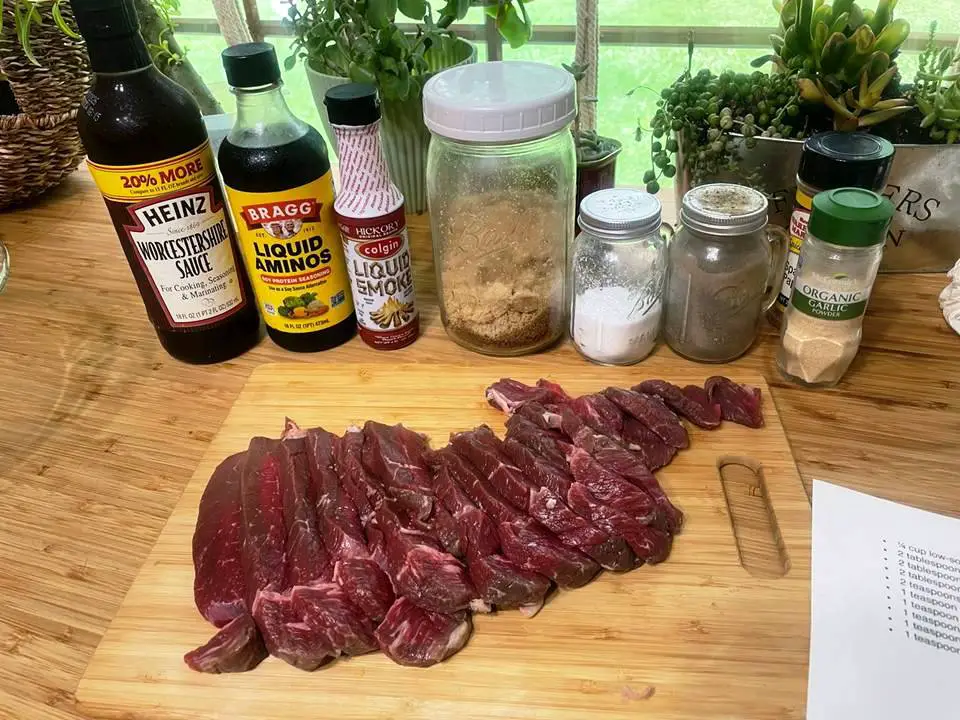
Create Your Marinade
In order to create your marinade, you’ll want to add all of your ingredients into a bowl or Ziplock bag and mix it well.
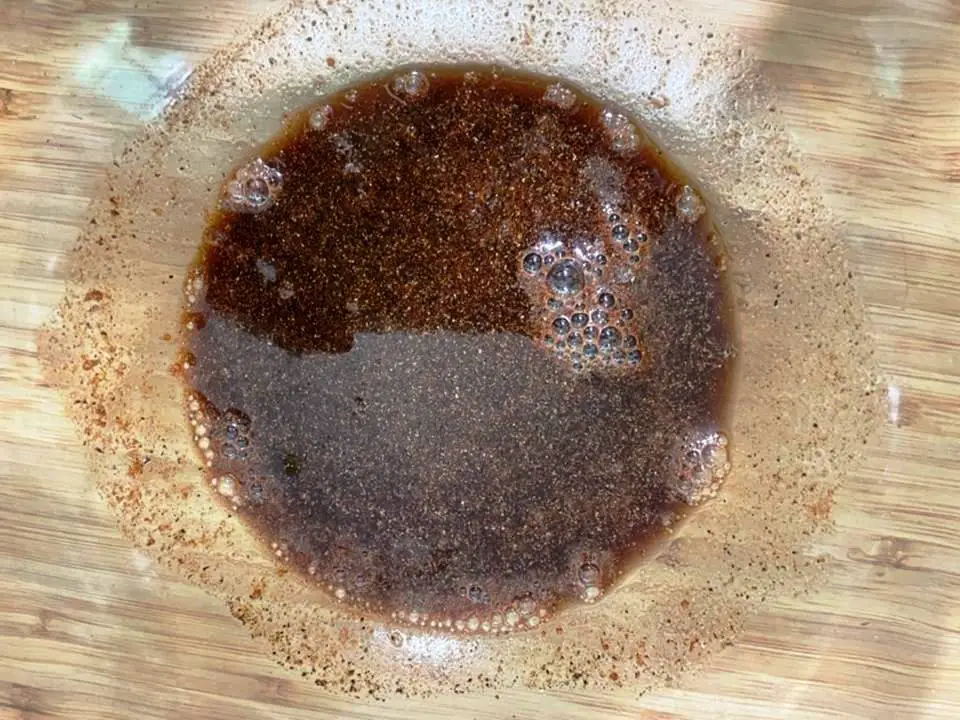
You can use a number of different recipes, such as this smokey flavor that I used:
- ¼ cup low-sodium soy sauce
- 2 tablespoons Worcestershire sauce
- 2 tablespoons liquid smoke
- 2 tablespoons brown sugar
- 2 teaspoons salt
- 1 teaspoon ground black pepper
- 1 teaspoon garlic powder
- 1 teaspoon ground paprika
Or this saltier version:
- 1 ½ teaspoon pickling salt (or sea salt)
- 1 ½ teaspoon brown sugar
- 1 ½ teaspoon ground black pepper
- ½ teaspoon onion powder
- ½ teaspoon garlic powder
- ½ cup cold water
- ¼ teaspoon Prague Powder #1 (curing salt)
- ½ teaspoon liquid smoke (mesquite)
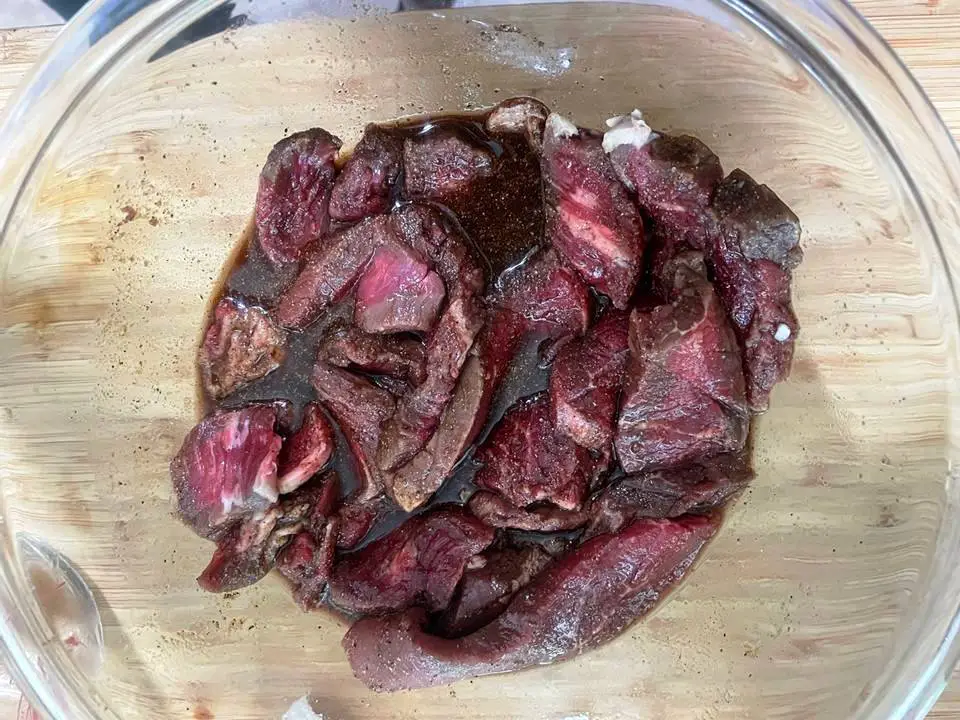
Once you have your marinade complete, you can lay your strips into your marinade and let them sit in the fridge for up to 24 hours. The longer they marinade, the stronger the flavor.
Drain Your Strips
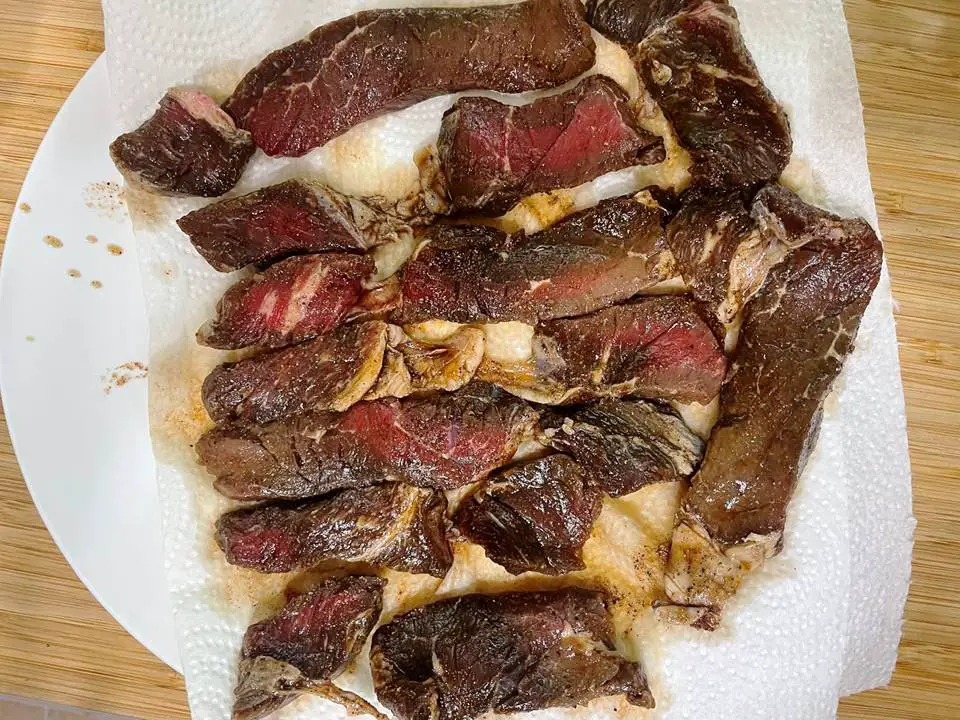
Next, you’ll want to drain the excess liquid off of your jerky strips. Then, pat them dry with a paper towel. You want the strips to be as dry as possible so they don’t end up feeling sticky when you dehydrate them.
Dehydrate your jerky
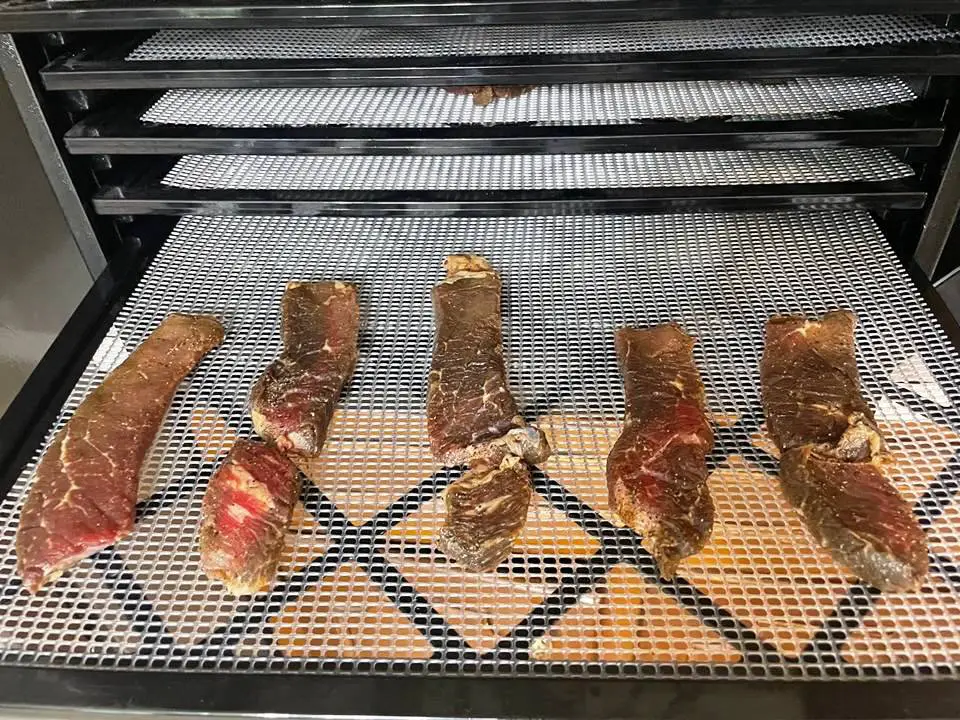
Space the strips evenly on the trays of your dehydrator. It’s important not to cram them tightly together because the strips need room for the air to circulate between them.
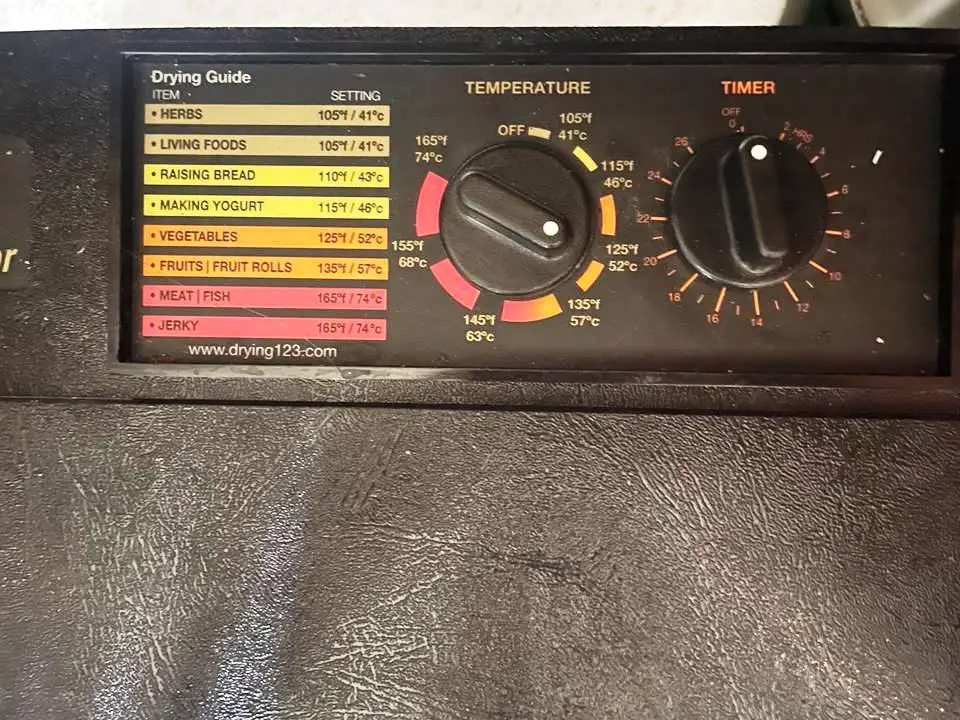
You’ll want to follow your specific dehydrator’s instructions, but make sure you heat the meat to 160 degrees Fahrenheit to kill off any bacteria. It will probably take anywhere from 4 to 6 hours if you are dehydrating your jerky in the dehydrator. Mine took much longer due to the humidity and thick strips that I used.
If you make your jerky in the oven, it could be done in as little as 2 and half hours, but if you use a smoker, it could take much longer.
Test for Doneness

You’ll need to periodically check your jerky for doneness. Take out a piece of jerky and allow it to cool. When you bend the jerky, it should bend but not break – it shouldn’t be brittle. You’ll see white fibers in the meat, and you definitely should not still see red.
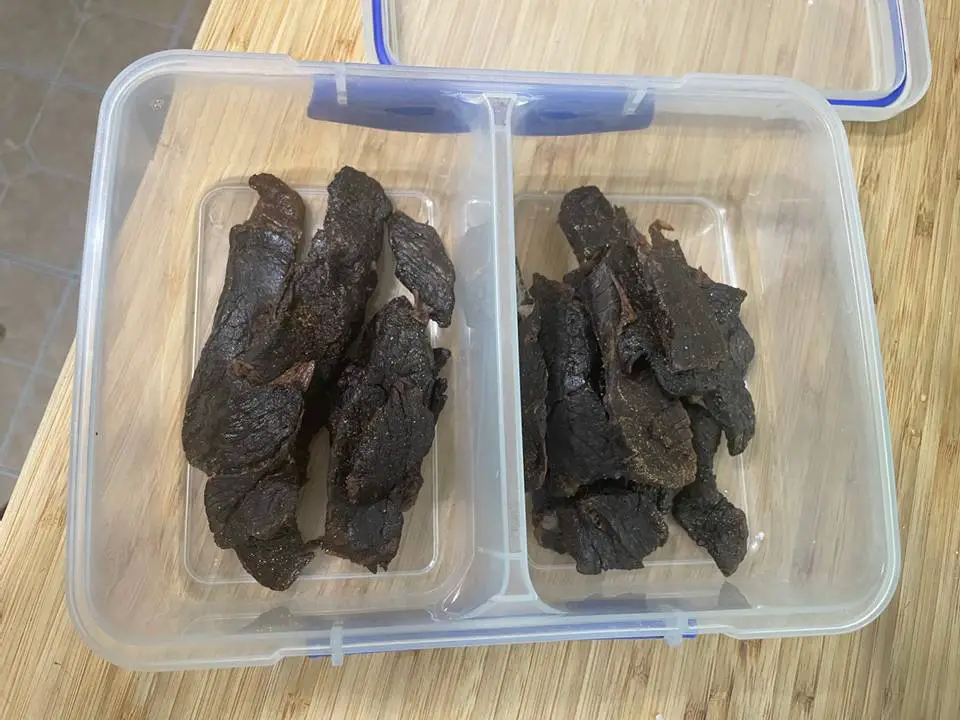
Store Your Jerky
You’ll want to store your beef jerky in the fridge for up to 2 weeks or vacuum sealed for up to a month or two.
Like this post? Don't Forget to Pin It On Pinterest!
You May Also Like:













Get your meat from a rancher or farm you trust. They’re jabbing the cattle with mRNA 💉
Can you freeze the jerky? Also can you use a meat slicer?
Yes to both.